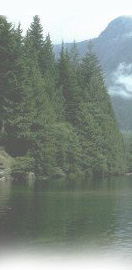| ||||||||||||||||||||||||||||
 Proactive disclosure Print version |  The GSDNR Communicator: Fall 2004 This information represents activities in the Earth Sciences Sector Programs (2002-2006). Please refer to Priorities for information on current Earth Sciences Sector Programs.
GSDNR's Landsat-7 National Imagery Coverage project collected the last Landsat-7 satellite image needed for the complete coverage of the Canadian landmass in September, 2004. This last image covered a part of northern Canada that had not previously been imaged due to cloud cover. The project, co-financed by the GeoConnections program, is the result of an unequalled collaboration between provincial, territorial, and federal governments. More than 20 governmental organizations collaborated in the realization of this project. Now that a preliminary national coverage of Canada exists, the Landsat-7 project is working towards improving about 60 orthoimages in order to deliver images that are both geometrically more precise and more cloud-free. This work is expected to be complete by January 2005. The goal of the Landsat-7 National Imagery Coverage project is to produce a national data layer that is precise and up-to-date to serve as a framework for the integration of multiple geographical information sources. In addition to serving as a base layer to which other geospatial data layers are referenced, Landsat-7 orthoimages are used for a number of natural resource management applications. For example:
 larger image [GIF, 109.7 kb, 450 X 356, notice]
Between the 19th of November 2003, when the GeoBase portal was launched, and the 30 September 2004, more than 7 000 clients and partners downloaded a total of about 49 000 Landsat-7 orthoimages. This does not include images downloaded from the GeoGratis portal nor does it include the direct distribution of GSDNR's Landsat-7 images from the private sector to their own clients. All of the GeoBase data layers, including Landsat-7 orthoimages and the control points used for their orthorectification are available free of charge on the GeoBase Web site for the Canadian geomatics community and industry leaders in the field of land and resource management to take advantage of. For more information contact: The GSDNR Communicator: Fall 2004
| ||||||||||||||||||||||||||||||||||||||||||||||